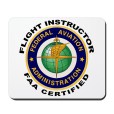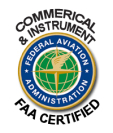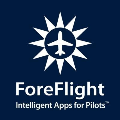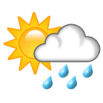Requirements & Limitations
Flight training is a highly individualized process and the actual number of hours required to reach a standard will vary significantly by the candidate
Student pilot
There is no minimum aeronautical knowledge or experience requirement for the issuance of a student pilot certificate other than the medical requirements for the class of medical certificate the student certificate is based upon. There are, however, minimum aeronautical knowledge and experience requirements for student pilots to solo.
Sport pilot
The Sport Pilot certificate was created in September 2004 after years of work by the Experimental Aircraft Association (EAA). The intent of the new rule was to lower the barriers of entry into aviation and make flying more affordable and accessible.
The new rule also created the Light Sport Aircraft (LSA) category of aircraft, which are smaller, lower-powered aircraft. The sport pilot certificate offers limited privileges mainly for recreational use. It is the only powered aircraft certificate that does not require a medical certificate; a valid vehicle driver's license can be used as proof of medical competence provided the prospective pilot was not rejected for their last Airman Medical Certificate.
Before a trainee can start the solo phase of flight training, a Student Sport Pilot Certificate must be issued by the Federal Aviation Administration (FAA). These may be obtained from an FAA Flight Standards District Office or FAA Designated Pilot Examiner.
To qualify for the Sport pilot certificate, an applicant must
- Be at least 16 years of age (14 for glider or balloon)
- Be able to read, speak, write, and understand English
- Log at least 20 hours of flight time, of which at least
- 15 hours must be dual instruction with a qualified flight
instructor
- 2 hours must be cross-country dual instruction
- 5 hours must be solo flight
- 15 hours must be dual instruction with a qualified flight
instructor
- Fly one solo cross-country flight over a total distance of 75 or more nautical miles to two different destinations to a full-stop landing. At least one leg of this cross-country must be over a total distance of at least 25 nautical miles (46 km).
- Have received 2 hours of dual instruction in the preceding 60 days, in preparation for the Practical Test
- Pass a Knowledge (written) test
- Pass a Practical (oral and flight) test
- Have a valid US State drivers license or a current 3rd class or higher Airman Medical Certificate
The above requirements are for heavier-than-air powered aircraft (airplanes). The requirements for gliders, balloons, helicopters, and dirigibles vary slightly.
Sport Pilots are only eligible to fly aircraft that are either certified specifically as light-sport aircraft (LSA) or were certified prior to the LSA regulations and are within the maximum weight and performance limitations of light-sport aircraft.
The restrictions placed on a Pilot exercising the privileges of a Sport pilot certificate are:
- No more than one passenger
- Daytime flight only (civil twilight is used to define day/night)
- Maximum takeoff Weight of 1320 lbs, compared to 12,500 lb of the Private Pilot Certificate or the Recreational Pilot Certifcate
- No flight above 10,000 feet MSL or 2,000 feet AGL, whichever is higher (this automatically excludes flight in Class A airspace)
- No flight in any of the airspace classes that require radio communication (B, C, or D) without first obtaining additional instruction and instructor endorsement
The Sport pilot certificate is also ineligible for additional ratings (such as an Instrument rating), although time in light-sport aircraft can be used towards the experience requirement of other ratings on higher certificate types.
Recreational pilot
The recreational pilot certificate requires less training and offers fewer privileges
than the private pilot certificate. It was originally created for flying small single-engine planes but has since been largely replaced by the Sport Pilot certificate.
Eligibility requirements:
- Be at least 17 years old
- Be able to read, speak, write and understand the English language
- Pass a required knowledge test
- Pass a required oral and practical flight test administered by a FAA designated examiner
- Hold either a student or sport pilot certificate.
- Meet the following experience requirements:
- 30 hours of flight time (15 hours of flight training, 3 hours of solo time, 2 hours of cross country > 25NM)
Limitations and restrictions:
- May not carry more than one passenger
- May not fly to an airport further than 50 nmi from the departure point without an instructor endorsement. Once endorsement is received, pilot may fly beyond 50 NM.
- May not fly in Class B, C, D airspace or to any controlled airport without an instructor endorsement.
- May not fly an aircraft that has more than four seats, more than one engine, more than 180HP, retractable landing gear or between sunset and sunrise.
- If pilot has logged less than 400 hours and has not acted as pilot in command within 180 days, a flight review is required.
- May not fly above 10,000 ft MSL or 2,000 ft AGL (whichever is higher)
Private pilot
The private pilot certificate is the certificate held by the majority of active pilots. It allows command of any aircraft (subject to appropriate ratings) for any non-commercial purpose, and gives almost unlimited authority to fly under visiual flight rules (VFR). Passengers may be carried and flight in furtherance of a business is permitted; however, a private pilot may not be compensated in any way for services as a pilot, although passengers can pay a Pro Rata share of flight expenses, such as fuel or rental costs. Private pilots may also operate charity flights, subject to certain restrictions.
The requirements to obtain a private pilot certificate for "airplane, single-engine, land", or ASEL, (which is the most common certificate) are:
- Be at least 17 years old (16 years old for glider or balloon rating)
- Be able to read, speak, write and understand the English language
- Obtain at least a third class medical certificate from an Aviation Medical Examiner (except for glider or balloon)
- Pass a computerized aeronautical knowledge test
- Accumulate and log a specified amount of training and experience, including the
following:
- If training under Part 61, Title 14 of the Code of Federal Regulations (CFR) section
61.109, requires at least 40 hours of flight time, including 20 hours of flight with an instructor and 10 hours of solo flight (i.e., by yourself), and other requirements including cross-country
flight, which include
- Solo requirements:
- 5 hours of solo cross-country time
- One solo cross-country flight of at least 150 nmi (280 km) total distance, with full-stop landings at a minimum of three points and with one segment of the flight consisting of a straight-line distance of at least 50 nmi (93 km) between the takeoff and landing locations
- Three solo takeoffs and landings to a full stop at an airport with an operating control tower.
- Night requirements:
- 3 hours of night flight training
- 10 takeoffs and 10 landings to a full stop (with each landing involving a flight in the traffic pattern) at an airport
- 3 hours of flight training on the control and maneuvering solely by reference to instruments
- 3 hours of flight training for cross country flights
- 3 hours of flight training with an authorized instructor in preparation for the practical test, which must have been performed within the preceding 2 calendar months from the month of the test
- Solo requirements:
- If training under Part 141, at least 35 hours of piloting time including 20 hours with an instructor and 5 hours of solo flight, and other requirements including cross-country and night flights
- If training under Part 61, Title 14 of the Code of Federal Regulations (CFR) section
61.109, requires at least 40 hours of flight time, including 20 hours of flight with an instructor and 10 hours of solo flight (i.e., by yourself), and other requirements including cross-country
flight, which include
- Pass an oral test and flight test administered by an FAA inspector, FAA-designated examiner, or authorized check instructor
Instrument Rating
iInstrumnet flight rules allows a pilot who is instrumnet rated to operate an aircraft by relying almost solely on instruments. An instrument rating also allows a commercial pilot to fly in an unrestricted manner as far as mileage and night time flying. A person most also possess an instrument rating to obtain a certified flight instructor rating.
(1) Hold at least a private pilot certificate with an airplane, helicopter, or powered-lift rating appropriate to the instrument rating sought;
(2) Be able to read, speak, write, and understand the English language. If the applicant is unable to meet any of these requirements due to a medical condition, the Administrator may place such operating limitations on the applicant's pilot certificate as are necessary for the safe operation of the aircraft;
(3) Receive and log ground training from an authorized instructor or accomplish a home-study course of training on the aeronautical knowledge areas of paragraph (b) of this section that apply to the instrument rating sought;
(4) Receive a logbook or training record endorsement from an authorized instructor certifying that the person is prepared to take the required knowledge test;
(5) Receive and log training on the areas of operation of paragraph (c) of this section from an authorized instructor in an aircraft, flight simulator, or flight training device that represents an airplane, helicopter, or powered-lift appropriate to the instrument rating sought;
(6) Receive a logbook or training record endorsement from an authorized instructor certifying that the person is prepared to take the required practical test;
(7) Pass the required knowledge test on the aeronautical knowledge areas of paragraph (b) of this section; however, an applicant is not required to take another knowledge test when that person already holds an instrument rating; and
(8) Pass the required practical test on the areas of operation in paragraph (c) of this section in—
(i) An airplane, helicopter, or powered-lift appropriate to the rating sought; or
(ii) A flight simulator or a flight training device appropriate to the rating sought and for the specific maneuver or instrument approach procedure performed. If an approved flight training device is used for the practical test, the instrument approach procedures conducted in that flight training device are limited to one precision and one nonprecision approach, provided the flight training device is approved for the procedure performed.
(b) Aeronautical knowledge. A person who applies for an instrument rating must have received and logged ground training from an authorized instructor or accomplished a home-study course on the following aeronautical knowledge areas that apply to the instrument rating sought:
(1) Federal Aviation Regulations of this chapter that apply to flight operations under IFR;
(2) Appropriate information that applies to flight operations under IFR in the “Aeronautical Information Manual;”
(3) Air traffic control system and procedures for instrument flight operations;
(4) IFR navigation and approaches by use of navigation systems;
(5) Use of IFR en route and instrument approach procedure charts;
(6) Procurement and use of aviation weather reports and forecasts and the elements of forecasting weather trends based on that information and personal observation of weather conditions;
(7) Safe and efficient operation of aircraft under instrument flight rules and conditions;
(8) Recognition of critical weather situations and windshear avoidance;
(9) Aeronautical decision making and judgment; and
(10) Crew resource management, including crew communication and coordination.
(c) Flight proficiency. A person who applies for an instrument rating must receive and log training from an authorized instructor in an aircraft, or in a flight simulator or flight training device, in accordance with paragraph (e) of this section, that includes the following areas of operation:
(1) Preflight preparation;
(2) Preflight procedures;
(3) Air traffic control clearances and procedures;
(4) Flight by reference to instruments;
(5) Navigation systems;
(6) Instrument approach procedures;
(7) Emergency operations; and
(8) Postflight procedures.
(d) Aeronautical experience for the instrument-airplane rating. A person who applies for an instrument-airplane rating must have logged:
(1) Fifty hours of cross country flight time as pilot in command, of which 10 hours must have been in an airplane; and
(2) Forty hours of actual or simulated instrument time in the areas of operation listed in paragraph (c) of this section, of which 15 hours must have been received from an authorized instructor who holds an instrument-airplane rating, and the instrument time includes:
(i) Three hours of instrument flight training from an authorized instructor in an airplane that is appropriate to the instrument-airplane rating within 2 calendar months before the date of the practical test; and
(ii) Instrument flight training on cross country flight procedures, including one cross country flight in an airplane with an authorized instructor, that is performed under instrument flight rules, when a flight plan has been filed with an air traffic control facility, and that involves—
(A) A flight of 250 nautical miles along airways or by directed routing from an air traffic control facility;
(B) An instrument approach at each airport; and
(C) Three different kinds of approaches with the use of navigation systems.
(e) Aeronautical experience for the instrument-helicopter rating. A person who applies for an instrument-helicopter rating must have logged:
(1) Fifty hours of cross country flight time as pilot in command, of which 10 hours must have been in a helicopter; and
(2) Forty hours of actual or simulated instrument time in the areas of operation listed under paragraph (c) of this section, of which 15 hours must have been with an authorized instructor who holds an instrument-helicopter rating, and the instrument time includes:
(i) Three hours of instrument flight training from an authorized instructor in a helicopter that is appropriate to the instrument-helicopter rating within 2 calendar months before the date of the practical test; and
(ii) Instrument flight training on cross country flight procedures, including one cross country flight in a helicopter with an authorized instructor that is performed under instrument flight rules and a flight plan has been filed with an air traffic control facility, and involves—
(A) A flight of 100 nautical miles along airways or by directed routing from an air traffic control facility;
(B) An instrument approach at each airport; and
(C) Three different kinds of approaches with the use of navigation systems.
(f) Aeronautical experience for the instrument-powered-lift rating. A person who applies for an instrument-powered-lift rating must have logged:
(1) Fifty hours of cross country flight time as pilot in command, of which 10 hours cross country must have been in a powered-lift; and
(2) Forty hours of actual or simulated instrument time in the areas of operation listed under paragraph (c) of this section, of which 15 hours must have been received from an authorized instructor who holds an instrument-powered-lift rating, and the instrument time includes:
(i) Three hours of instrument flight training from an authorized instructor in a powered-lift that is appropriate to the instrument-powered-lift rating within 2 calendar months before the date of the practical test; and
(ii) Instrument flight training on cross country flight procedures, including one cross country flight in a powered-lift with an authorized instructor that is performed under instrument flight rules, when a flight plan has been filed with an air traffic control facility, that involves—
(A) A flight of 250 nautical miles along airways or by directed routing from an air traffic control facility;
(B) An instrument approach at each airport; and
(C) Three different kinds of approaches with the use of navigation systems.
(g) Use of flight simulators or flight training devices. If the instrument time was provided by an authorized instructor in a flight simulator or flight training device—
(1) A maximum of 30 hours may be performed in that flight simulator or flight training device if the instrument time was completed in accordance with part 142 of this chapter; or
(2) A maximum of 20 hours may be performed in that flight simulator or flight training device if the instrument time was not completed in accordance with part 142 of this chapter.
(h) Use of an aviation training device. A maximum of 10 hours of instrument time received in an aviation training device may be credited for the instrument time requirements of this section if—
(1) The device is approved and authorized by the FAA;
(2) An authorized instructor provides the instrument time in the device;
(3) No more than 10 hours of instrument time in a flight simulator or flight training device was credited for the instrument time requirements of this section;
(4) A view-limiting device was worn by the applicant when logging instrument time in the device; and
(5) The FAA approved the instrument training and instrument tasks performed in the device.
Commercial pilot
A Commericial Pilot may be compensated for flying. Training for the certificate focuses on a better understanding of aircraft systems and a higher standard of airmanship. The commercial certificate itself does not allow a pilot to fly in instrument meteorological conditions. For aircraft categories where an instrument rating is available, commercial pilots without an instrument rating are restricted to daytime flight within 50 nautical miles when flying for hire.
A commercial airplane pilot must be able to operate a complex airplane, as a specific number of hours of complex (or turbine-powered) aircraft time are among the prerequisites, and at least a portion of the practical examination is performed in a complex aircraft.
The requirements are:
- Be at least 18 years of age
- Hold a private pilot certificate
- Be able to read, speak, write, and understand the English language
- Accumulate and log a specified amount of training and experience; the following are
part of the airplane single-engine land class rating requirements:
- If training under Part 61, at least 250 hours of piloting time including 20 hours of training with an instructor and 10 hours of solo flight, and other requirements including several "cross-country" flights, i.e., more than 50 nautical miles (25 NM for helicopter rate) from the departure airport (which include Day VFR and Night VFR 100 nmi between points, with a time of at least two hours; also one solo cross country of at least 250 nmi one way, 300 nmi total distance, with landings at three airports) and both solo and instructor-accompanied night flights
- If training under Part 141, at least 150 hours of training time including 55 hours with an instructor and 10 hours of solo flight, and other requirements including several cross-country, solo, and night flights
- Pass a 100-question aeronautical knowledge written test
- Pass an oral test and flight test administered by an FAA inspector, FAA-designated examiner, or authorized check instructor
By itself, this certificate does not permit the pilot to set up an operation that carries members of the public for hire; such operations are governed by other regulations. Otherwise, a commercial pilot can be paid for certain types of operation, such as banner towing, agricultural applications, and photography, and can be paid for instructing if she or he holds a flight instructor certificate (In the case of lighter-than-air, only a commercial pilot certificate is required to teach for that category). To fly for hire, the pilot must hold a second class medical certificate, which is valid for 12 months.
Often, the commercial certificate reduces the pilot’s insurance premiums, as it is evidence of training to a higher safety standard.












